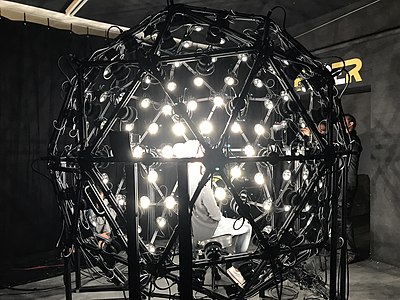How to protect yourself and others from covert modeling: Difference between revisions
Juho Kunsola (talk | contribs) (changed = Contact your representatives and raise the issues = to = How to protect our societies from covert modeling =) |
Juho Kunsola (talk | contribs) (copy-paste-moved content unchanged from Advice for judiciaries under the new subheading == How to protect our judiciaries from covert modeling ==) |
||
| Line 35: | Line 35: | ||
* Ask them what, if anything, they are doing to put this hyper-modern lawlessness under some check. | * Ask them what, if anything, they are doing to put this hyper-modern lawlessness under some check. | ||
* At least ask them '''to talk''' with '''colleagues''' and also '''publicly''' about the problems caused by covert modeling. | * At least ask them '''to talk''' with '''colleagues''' and also '''publicly''' about the problems caused by covert modeling. | ||
[[Digital look-alikes]] and [[digital sound-alikes]] prompt some changes to [[w:Rules of evidence|w:rules of evidence]] and updates to what should be deemed deniable. | |||
== How to protect our judiciaries from covert modeling == | |||
'''Recordings''' that sound like someone saying something '''[[digital sound-alikes|may not be genuine]]''' and therefore the suspect should be allowed to state to the court "''I did never say that thing you got on tape.''" | |||
'''Pictures''' and '''videos''' that looks like someone doing something '''[[digital look-alikes|may not be genuine]]''' and therefore the suspect should be allowed to state to the court "''I am not in that image/video.''" | |||
If '''[[Glossary#Media forensics|media forensics]]''' proves beyond suspicion the genuinity of the media in question or if credible witness to its creation is found, the media should be considered evidence. | |||
Revision as of 15:21, 16 April 2019

“I feel pretty confident that mister photograph man will not be selling much of my data to the no camera scene.”

“If your whole industry's shared secret is that digital look-alikes are going to pass human testing (i.e. people in the delusion that they are seeing images of humans) then popular culture product such as w:The Matrix will appear. It is widely known that meetings of surfaces, especially soft ones are very very difficult to do convincingly. Look-alikes of eyes meeting look-alikes of eye-lids are additionally hard to do, because there is also a liquid phase in the equation.”
“Sunglasses or sun glasses (informally called shades) are a form of w:protective eyewear designed primarily to prevent bright w:sunlight and w:high-energy visible light from damaging or discomforting the eyes.”


Protect your appearance from covert modeling
- Avoid uploading facial and full body photos and video of yourself to services where they are exposed to the whole Internet.
- If you need to upload photos, wear protective clothing, e.g. niqāb or burqa or protective accessories e.g. sunglasses.
- Consider getting a non-photorealistic w:avatar of your liking and use pictures of it to shield your appearance.
- Do not agree or get fooled to having your reflectance captured in a light stage.
Protect your voice from covert modeling
- Avoid uploading unaltered recordings of your w:human voice to services where they are exposed to the whole Internet.
- Consider altering the voice of your recordings if you must upload to the Internet with a voice changer or synthetic voice that does not match any human's voice.
- Avoid getting recorded by parties whose identity and reliability you cannot verify, especially if they do not expressly state how, where and for what purpose they will use the recording
- Ask for a voice changer to be applied if getting recorded to something that will be publicly broadcast
Protect your mind from the products of covert modeling
- Teach your loved ones the 2 key media literacy skills for this age of industrial disinformation:
- Not everything that looks like a video of people is actually a video of people
- Not everything that sounds like a recording of a known human's voice is actually a recording of that person's voice.
- Don't watch porn. A dodgy porn site or few is a hefty risk of seeing some digital look-alikes.
- Be critical of gossip about stuff claimed seen on the Internet.
Protect others from the products of covert modeling
- Read #Protect your mind from the products of covert modeling first. It is usually found above this. Also reading it to others has potential to help them.
- If you have strong evidence to suggest that some person may be under the influence of digital look-alikes, try to talk to them. The BCM! wiki glossary helps talk about things with their real names.
How to protect our societies from covert modeling
- Contact your representatives and ask them what is their position on the criminalizing covert modeling-question.
- Ask them what, if anything, they are doing to put this hyper-modern lawlessness under some check.
- At least ask them to talk with colleagues and also publicly about the problems caused by covert modeling.
Digital look-alikes and digital sound-alikes prompt some changes to w:rules of evidence and updates to what should be deemed deniable.
How to protect our judiciaries from covert modeling
Recordings that sound like someone saying something may not be genuine and therefore the suspect should be allowed to state to the court "I did never say that thing you got on tape."
Pictures and videos that looks like someone doing something may not be genuine and therefore the suspect should be allowed to state to the court "I am not in that image/video."
If media forensics proves beyond suspicion the genuinity of the media in question or if credible witness to its creation is found, the media should be considered evidence.